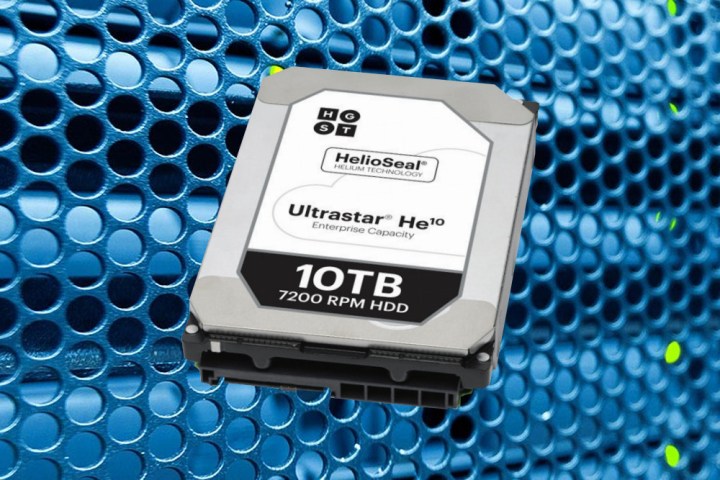
HGST has been working with helium for some time now. The gas offers several advantages over traditional air-filled drives thanks to its lower density, with decreased power consumption and increased storage capacity being the two most notable with regards to the Ultrastar He10.
Seven perpendicular magnetic recording (PMR) platters are packed into the standard 1-inch height of the drive. That’s unusual, because previous drives that hit the 10TB have used a technique called shingled magnetic recording (SMR). SMR overlaps portions of data tracks, increasing density, but in doing so it reduces the speed at which data can be accessed.
PMR is the more traditional way of building a mechanical drive, having gained popularity in 2005. Packing this method into a 10TB drive means HGST’s new Ultrastar He10 hits sustained transfer speeds of up to 249 megabytes for second — excellent for any mechanical hard disk, and near the performance of low-end solid state drives.
HGST will release both an 8TB and a 10TB version of the new Ultrastar, with SATA 6Gbps or serial-attached SCSI interfaces being released.
No official word has been given as to how much the Ultrastar He10 will cost at retail, but based on previous models it’s expected that it will carry a hefty pricetag. Given that its predecessor the He8 currently sells for around $550, the He10 is anticipated to launch at around $800. That is a lot of money, of course, but not surprising given its capacity and performance. A drive like this isn’t targeted at home users, where $800 is unreasonable for a hard drive, but instead data center and enterprise customers who need the last word in fast storage.


